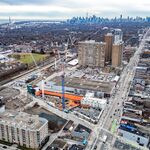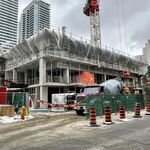This decision makes sense for the grade-separated Eglinton and Scarborough rapid transit lines. They should have left the on-street LRTs (local transit) to the TTC though.
Should also be interesting to see if the private sector pushes for Eglinton East to be grade-separated (elevated or side of road) as ridership was projected to double if the line was completely separated.
That's a very interesting point. It could be especially interesting if they bring in the same group responsible for the Canada Line. Certainly they're no strangers to an elevated LRT down the middle (or directly alongside) of a suburban avenue.
I always thought that if the B-D extension to Sheppard & McCowan didn't go ahead, that running the Eglinton and Scarborough LRTs as a single thru-line was the next best option.
Would also be interesting to see what this group brings forward in terms of money for a future westward extension. They can't really expect to get any ownership % of the line if they don't chip in money to help build it. If it's still being built 100% with public money, I'd certainly hope that the contract would only be to build, operate, and maintain, without any ownership stake.




